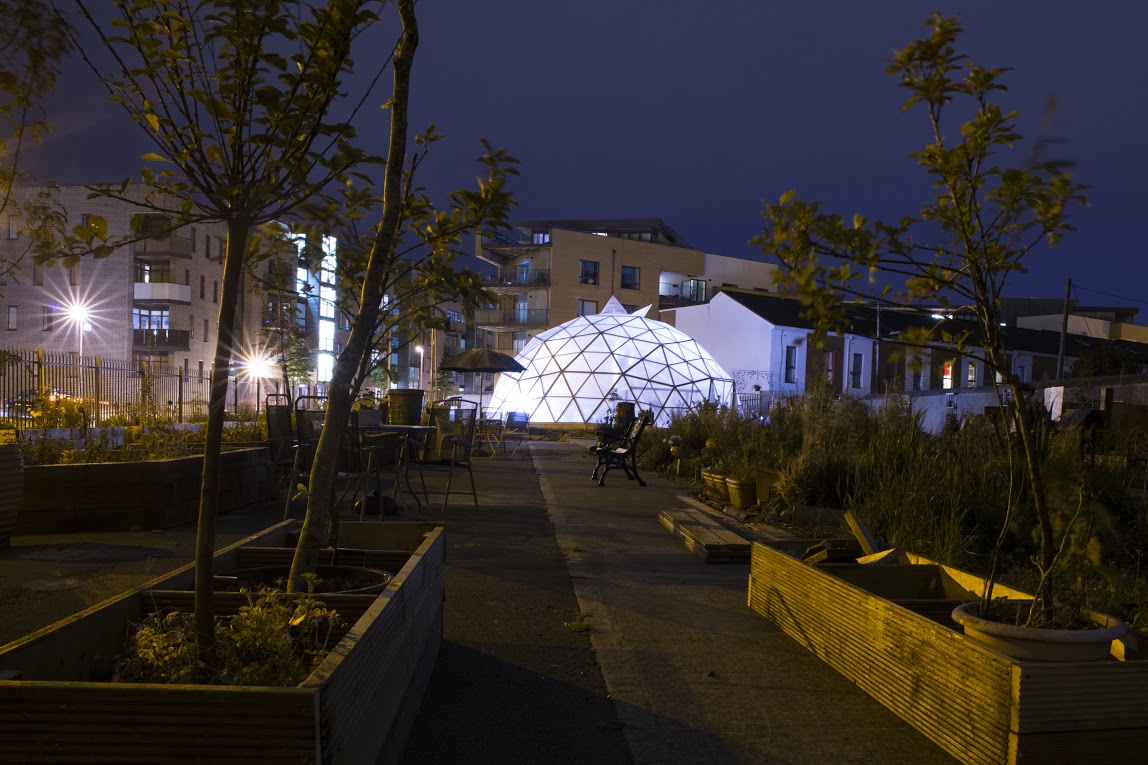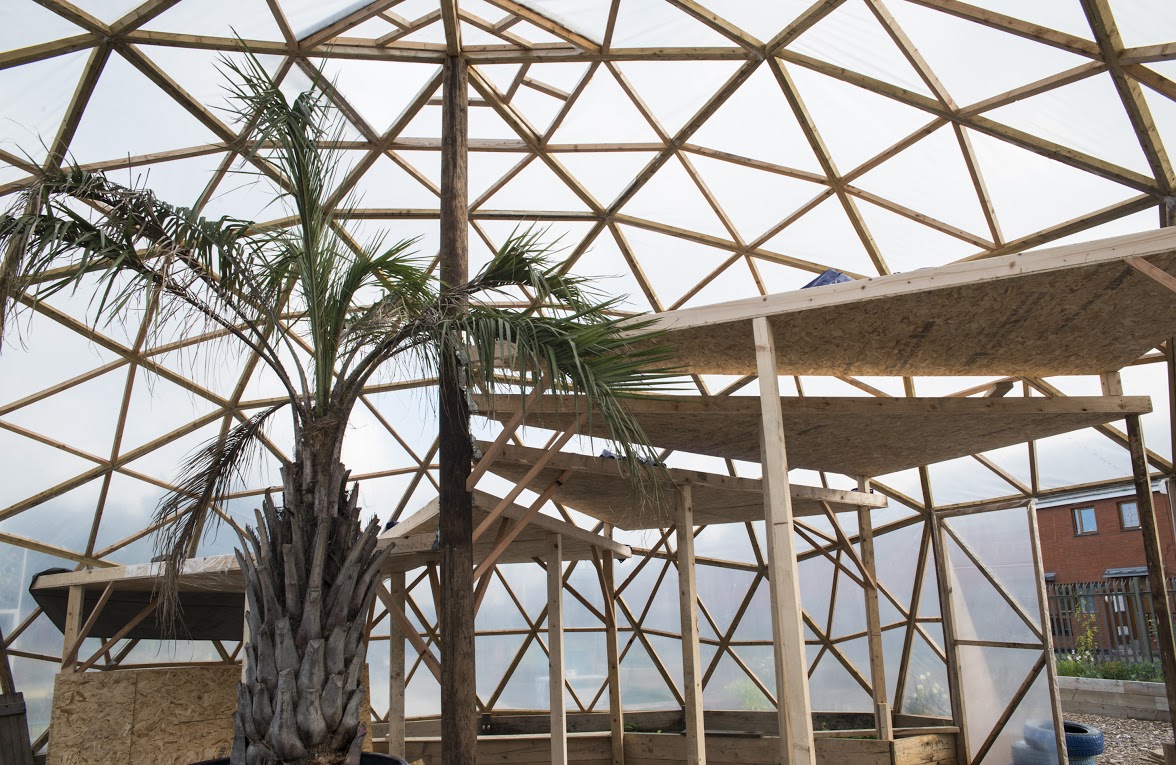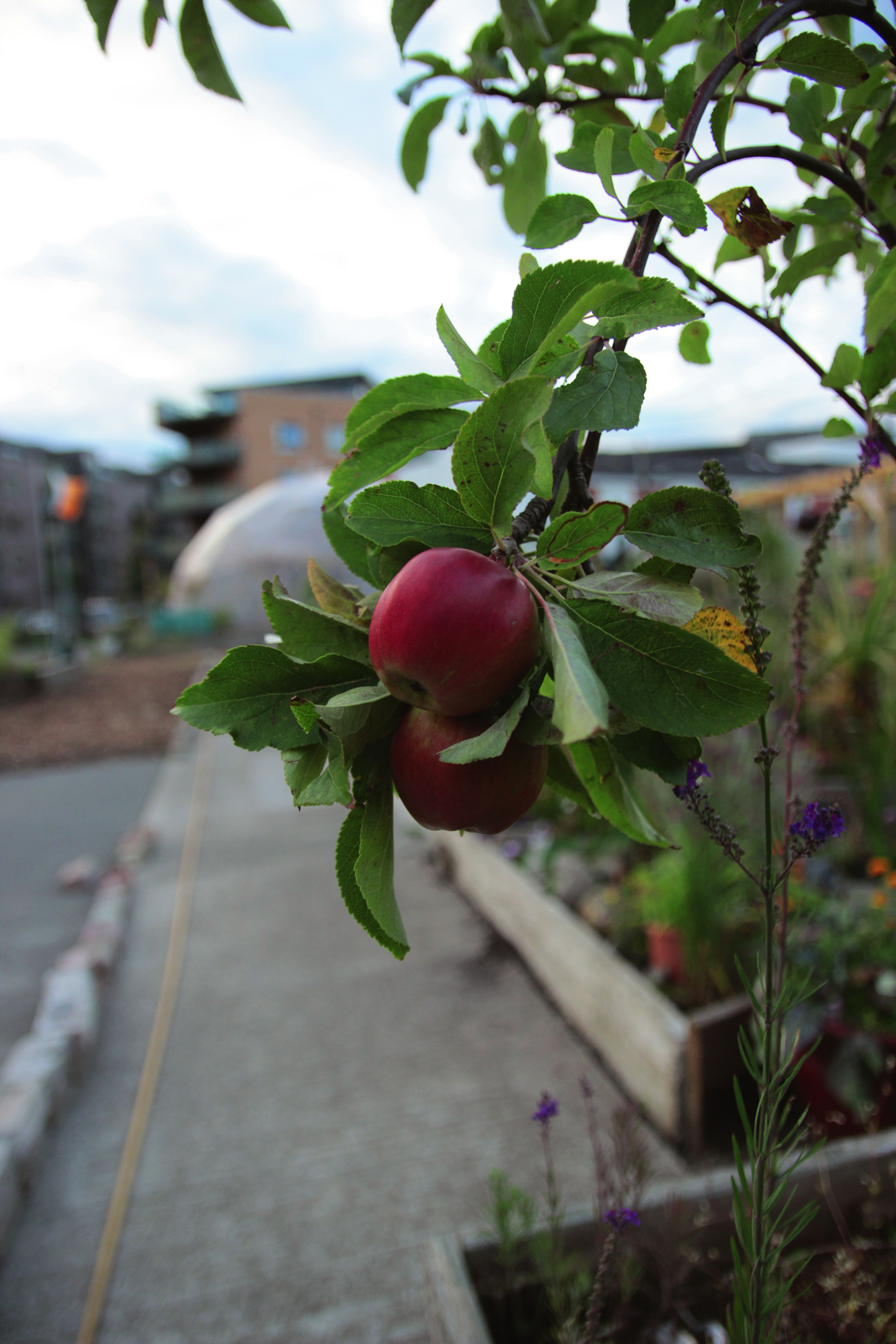
Image © Ivan Rynn
Photos by Ivan Rynn and Steve O’Connor
By Samuel Bishop
I’m passionate about innovative uses of vacant spaces for the good of the community. So you’ll understand my excitement upon discovering a pretty special project doing just that (and more) literally a stone’s throw from my new home in Dublin 8.
It’s important to me that we celebrate the great peopleorientated initiatives emerging around the country. These projects get little financing or exposure, but work extremely hard to make a difference in their community. I would argue that they are vital to the health of our communities and society as a whole.
Flanagan’s Fields is a community garden situated in an area which has undergone huge transformation in the past 15 years. It is a beautiful garden in its infancy, having only begun in 2011. It has an impressive and diverse range of elements to explore, from the commonage gardens, the micro-gardens (a mix of flowers and vegetables), the rubble herb spirals, the spiritual (zen) garden, the pond, the sensory garden, the small woodland (in progress), the healthy food zone, the compost zone and the wild flower and wheat growing space.















The first thing that strikes you is the dome. In stark contrast to the new red brick apartment complexes, the dome appears soft and subtle, yet shouts out for attention. It is unexpected, surprising and an exciting addition to the landscape. This is The Grow Dome, a geodesic dome made of timber and clear plastic sheeting, and is the most iconic part of this wonderful haven. What started out as a research and experimental project has expanded into a community hub, multi-purpose function room, greenhouse, rain shelter and education space and the complete opposite to dreary, concrete community centres! The dome and the garden are a source of pride and a landmark in the community. Members can join the garden with a payment of €5, which goes towards the cost of a key, and a small voluntary contribution of manual work.
The collective responsible for the creation of the dome explained the rationale behind it. Firstly, they aim to examine the feasibility of using brownfield urban sites for intensive ‘smart’ food production and small-scale job creation. Secondly, they want it to demonstrate sustainable technologies in food production, water management and energy conservation for both education in schools and in the rejuvenation of urban areas, particularly for larger cities in a way that builds on and supports local community efforts.
Their vision is to see this particular design act as a model for future Grow Domes elsewhere. It makes perfect sense; building a large, inspiring, temporary structure on a vacant piece of land to act as a community catalyst and hub. It certainly hasn’t been without a struggle. The core team had little experience of building a structure like this and it was a steep learning curve. It’s been challenging to get the construction completed, and while they have been successful with grants and awards, the intermittent nature of these has led to a cash-flow shortage which means they have had to operate on a start-stop basis. It will take time for the various residents groups and the wider community to fully adopt the project; this is standard for any innovative project. These are all things to remember if planning a project in your own community.
So what next? The members are planning the completion of the hydroponic beds in The Grow Dome. They are focussed on developing a piece of software that will feedback all types of data about the dome, the plants and the success rates of their tests. A temporary potting shed is in development in one corner, in partnership with the local Dolphin’s Barn Men’s Shed group. The pergola built by the Tús workers has now been completed and they are training the willow plants across it to act as shade.
I think what excites me most about this project is the emergence of an experimentation space within a clearly inclusive community space that caters for a huge range of skill development for all ages. This place is about testing things, trying things out, failing and learning openly, in and as a group. It’s a very different approach to how research is set up in the majority of our institutions. Ensuring that it remains open and inclusive will be a challenge, but this particular steering group seems able to take on any challenge! The idea that Grow Domes could crop up on vacant sites as experimental community spaces is an exciting prospect and one that could really take shape over the coming years.
This is taken from our autumn 2015 issue. Subscribe to have the next four issues delivered direct to your door.
Samuel Bishop is coordinator of happenings.ie and streetfeast.ie. Connect with him on Twitter at @Samue1

